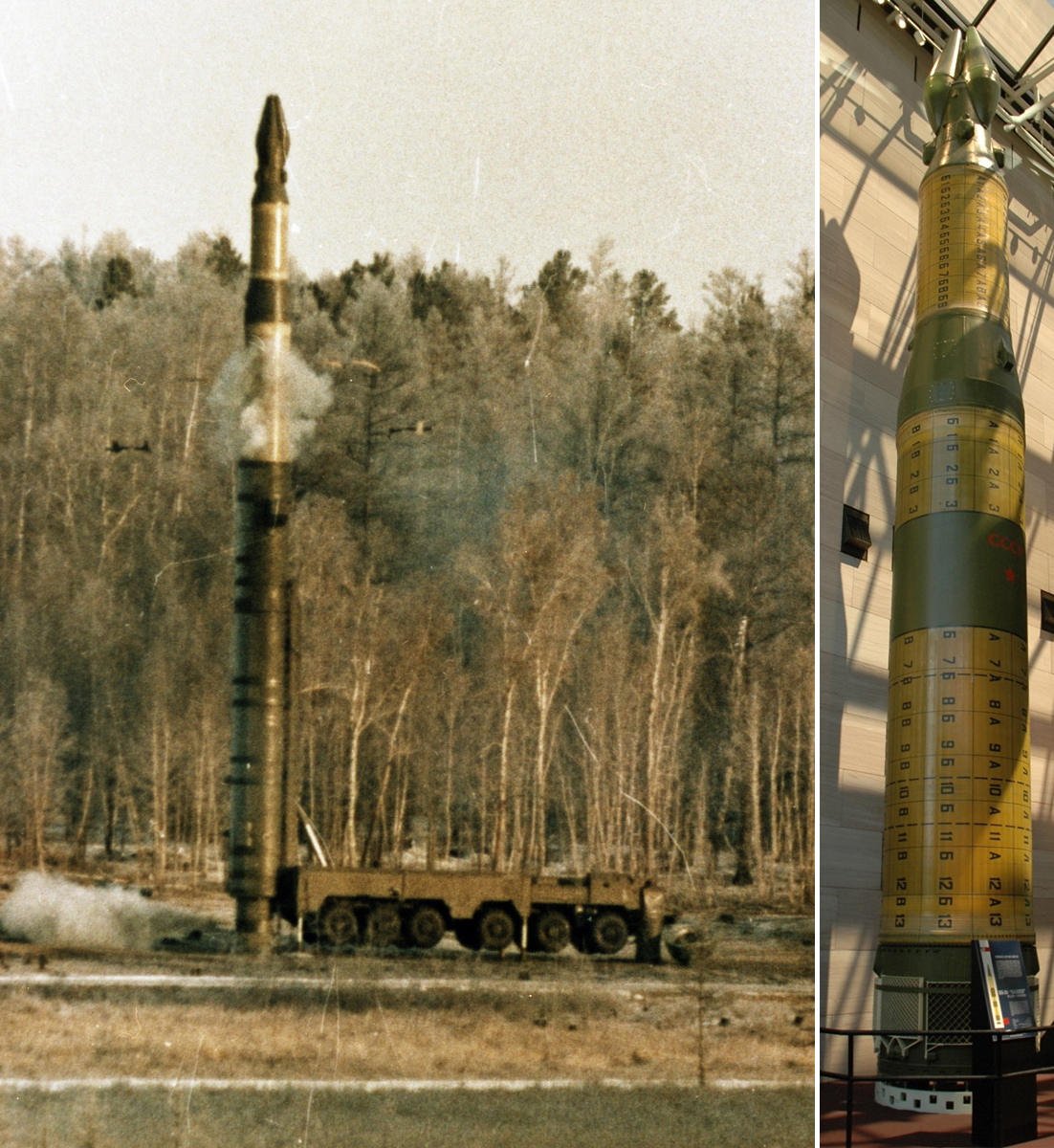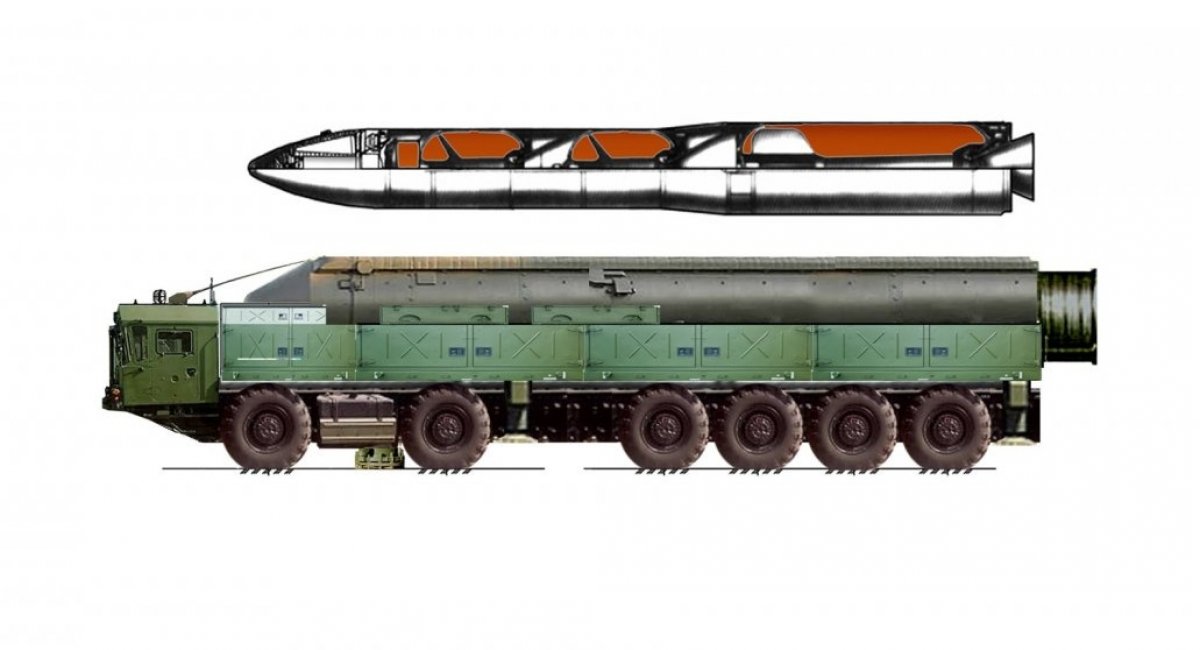In the Ukrainian media, unverified information has been actively spreading that the russian federation plans to launch the RS-26 Rubezh intermediate-range ballistic missile on Wednesday, November 20.
At the same time, some sources indicate that this should be a test launch of the missile from the russia’s Kapustin Yar military training area situated in the Astrakhan region, others - that it will be a combat launch. It should be noted that the latter is extremely unlikely. At the time of publication, there is no official data that can confirm or refute this information. In any case, it is worth recalling that the RS-26 Rubezh is designed to deliver nuclear charges.
Read more: russia's Racing to Expand Solid-Fuel Engine Production Capacity, Offering More S-400, Iskander and ICBM Missiles

It is important to recall that the real status of this development is currently unknown, but in any case this will not be the first test of the missile. The development of the RS-26 Rubezh is believed to have begun no later than 2006 under conditions of a high degree of secrecy due to the fact that it violated the INF Treaty.
The first launch of the RS-26 Rubezh ballistic missile was carried out on September 27, 2011, while the work on its creation was completed approximately in 2015. At that time, it was reported that the missile was planned to enter service with the russian Armed Forces in 2017. However, according to subsequent media reports, in 2018, the RS-26 Rubezh was allegedly excluded from the russian Armed Forces’ armament program until 2027. In the end, it was believed that the russians were instead focusing on the Iskander-K missile system.
It should be recalled that in July 2024, the Kremlin threatened to resume production of intermediate-range missiles, to which category the RS-26 Rubezh belongs. At present, it should be noted that the probability that russia has begun to implement this decision is quite high, in particular, given that the RS-26 Rubezh may be created on the basis of the russian Topol-M intercontinental ballistic missiles system (NATO reporting name: SS-27 Sickle B).
In particular, it is believed that the RS-26 Rubezh system was created on the basis of two stages of the Russian Topol-M missile. Previously, this approach was implemented in the USSR when creating the famous RSD-10 Pioneer intermediate-range missile, for which stages were taken from the Temp-2S missile - the predecessor of the Topol-type missile. Given that Rubezh is intended to be the same intermediate-range ballistic missile as the Soviet Pioneer missile, it is unlikely that russia followed a different path to its creation than the one taken by Soviet engineers.

It is known that the developer of the RS-26 Rubezh is the Moscow Institute of Thermal Technology, which is the developer of all Soviet/russian missiles of this type (Temp-2S, Pioneer, Topol and Yars missiles), while their manufacturer is the Votkinsk Machine Building Plant, which in addition to them also produces ballistic missiles for the Iskander system. In view of this, it should be stated that the russians really have all the capabilities to fairly quickly launch the production of RS-26 Rubezh intermediate-range ballistic missiles based on existing technological lines, supply chains as well as ready-made solutions.
The exact characteristics of the RS-26 Rubezh intermediate-range missile are currently unknown. Among those that are quite probable are a launch weight of 40-50 tons, a range of up to 6,000 km, combat equipment in the form of four separate nuclear warheads with a capacity of 0.3 Mt each, similar to those used in the RS-24 Yars intercontinental baliastic missile. It was also reported that this missile can be equipped with a conventional high-explosive warhead with an explosive charge of up to 1,200 kg. It was reported, that the missile is also intended to be capable of carrying the russia’s Avangard hypersonic glide vehicle.

The RS-26 is designed to pose a strategic threat to European capitals and has the ability to target NATO forces in Western Europe. In particular, according to an article by Jeffrey Lewis entitled "The Problem With Russia's Missiles" on the Foreign Policy, the purpose of these weapons is to deter Western forces from coming to the aid of the NATO's newer eastern members that are located closer to russia's borders.
Earlier Defense Express reported, that russia had a craving for Iranian ballistic missiles, as the RS-26 Rubezh missile project was shut down.
Read more: Defense Express’ Weekly Review: russian Forces Limit Their Use of Equipment in Pokrovsk, the U.S. Resumes Explosives Production, Satellite Imagery Reveals russia’s R-30 Bulava Nuclear Missile Preparations














